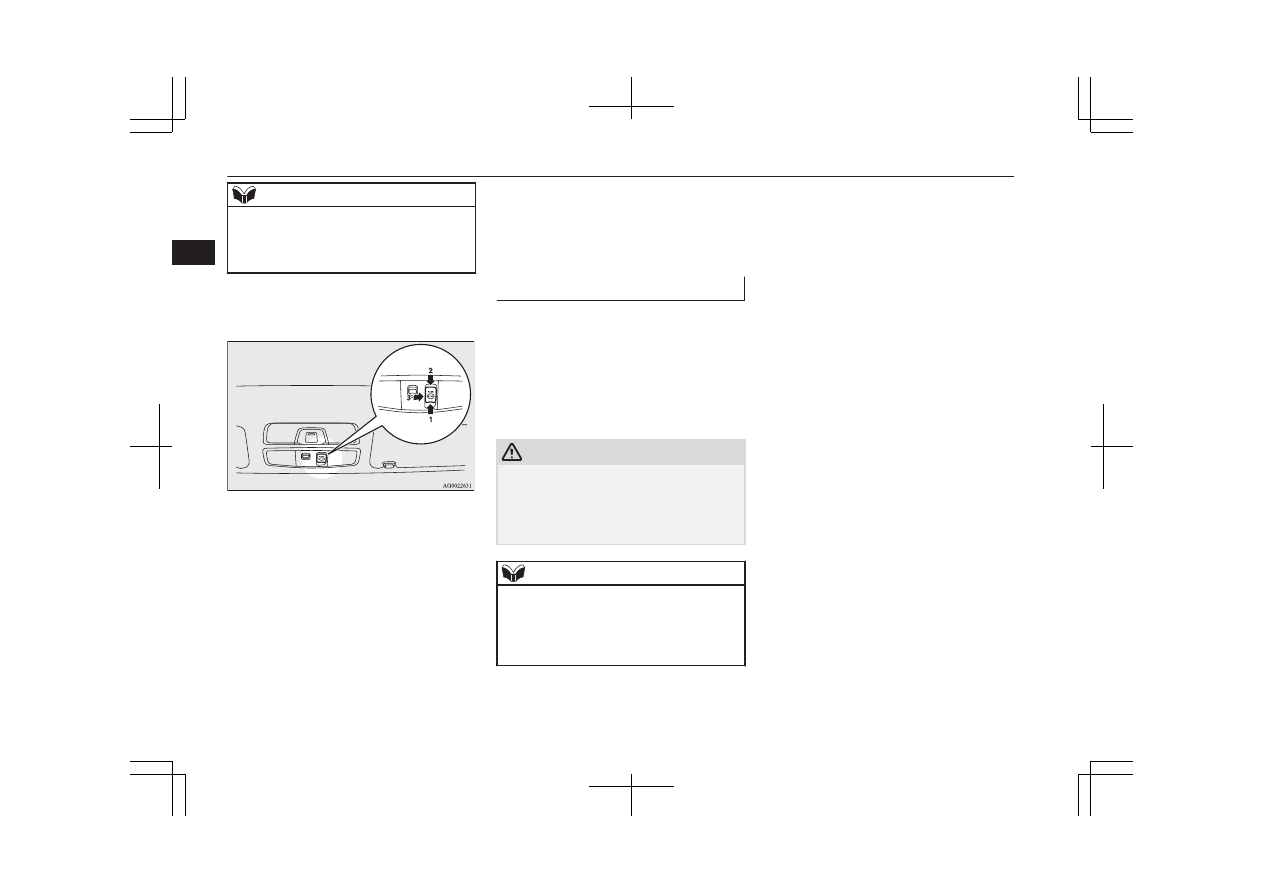Mitsubishi ASX (2018 year). Instruction - part 5

NOTE
l
Close the sunshade when parking the vehicle
for a long time. Parking in the hot sun with
the sunshade open will make the vehicle in-
side extremely hot.
The sunshade can only be operated with the
ignition switch or the operation mode in ON.
1- Open
2- Close
3- Stop
To open, press the switch (1).
Press and hold the switch (1), the sunshade
automatically opens. Release the switch once
the sunshade starts moving automatically.
To stop the moving sunshade, press the
switch (1), (2) or (3).
To close, press the switch (2).
Press and hold the switch (2), the sunshade
automatically closes. Release the switch once
the sunshade starts moving automatically.
To stop the moving sunshade, press the
switch (1), (2) or (3).
Safety mechanism
If a hand or head is trapped in the closing
sunshade, it will reopen automatically.
Nonetheless, make sure that nobody brings
their head or hand near the sunshade when
opening or closing.
The opened sunshade will become operation-
al after a few seconds.
CAUTION
l
The safety mechanism is cancelled just be-
fore the sunshade is fully closed. This allows
the sunshade to close completely.
Therefore be especially careful that no fin-
gers are trapped in the sunshade.
NOTE
l
The safety mechanism can be activated if the
driving conditions or other circumstances
cause the sunshade to be subjected to a phys-
ical shock similar to that caused by a trapped
hand or head.
Sunshade*
3-42
OGAE18E1
Locking and unlocking
3